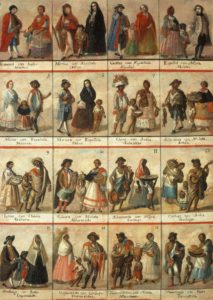Although there is evidence of an African presence in Mesoamerica (c. 800) during the Olmec civilization, Spaniards brought Africans to Mexico (“New Spain”) as slaves to work in the sugar fields and gold and silver mines in the 16th century. New Spain probably had more enslaved Africans than any other colony in the Western Hemisphere. Many Blacks were born in Mexico and followed their parents into slavery, which was abolished in Mexico in 1829. The town of Yanga, in the state of Veracruz, was one of the Americas' earliest “maroon” (escaped slaves) communities. Originally known as San Lorenzo de los Negros, in 1932 the town was renamed for its founder, a rebellious Muslim from Nigeria.
Entries for this report include:
- Dr. Rhonda Gonzales, Univ. of Texas San Antonio: "The African Presence in New Spain, c. 1528-1700."
- Dr. Doug Richmond, Univ. of Texas Arlington: "The Emergence of Afro-Tejano Society During the Spanish Colonial
Colonial Period in Texas, 1528-1700." - Roxanne Evans: "Exploration of an African Presence in Meso-America: The Olmecs."
- Rebecca Smith: "From Bananas to La Bamba: Cultural Ties Between Africa and Mexico."
- Michael Hurd: "Gaspar Yanga"
- Michael Hurd: "Thor Heyerdahl"

